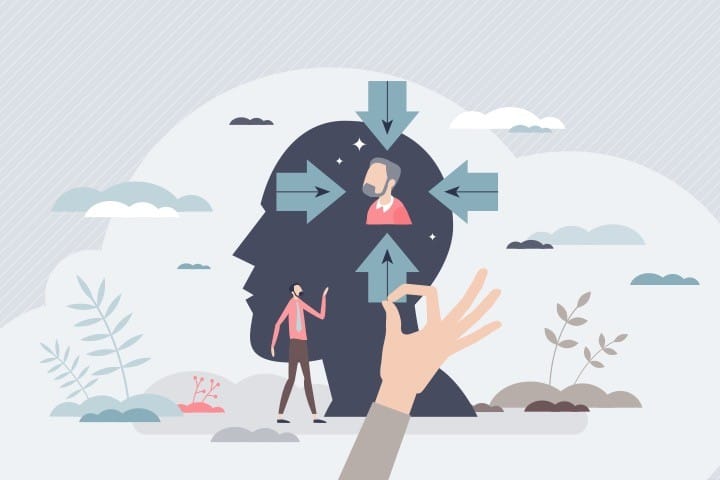by Selwyn Duke, The New American:

For decades, the politically correct line has been that society is implicitly biased against women, non-whites, and an assortment of other “minority” groups. This alleged bias is said to lead to poorer social, health, educational, and career outcomes, even though in certain cases, minority groups may fare better than “majority” populations in these respects. What’s more, a billion-dollar “implicit bias training” industry has blossomed in a purported effort to eliminate these attitudes. But this training may itself need retraining, as a new study finds that there are implicit biases — and they’re largely the opposite from what we’ve been told.
TRUTH LIVES on at https://sgtreport.tv/
In fact, the most significant bias researchers found was in favor of women and against men.
The study, involving almost 6,000 individuals and published in the Journal of Personality and Social Psychology, also discovered a notable but less significant bias relating to social class. Contrary to popular pseudo-elite narratives, however, race wasn’t much of a factor at all. And age was irrelevant.
PsyPost.org provides some background on the research methodology. “Implicit Association Tests (IATs) are a type of psychological tool designed to measure implicit biases (unconscious attitudes) that people may hold towards certain social groups or concepts,” the site writes. “IATs typically involve participants quickly categorizing stimuli, such as words or images, into different categories using a computer keyboard or mouse. The basic idea behind the test is that people will be faster and more accurate when categorizing stimuli that are more closely associated in their minds, compared to stimuli that are less closely associated.”
In other words, explains study author Paul Connor, a postdoctoral scholar with the Adversarial Collaboration Project at the University of Pennsylvania, “In the classic IAT, your task is simply, ‘If you see a white face, press this key, if you see a [b]lack face, press this key. If you see a positive word, press this key, and if you see a negative word, press this key,’” related Salon, April 8.
“This is a way of measuring attitudes towards something like, in this example, race, without actually asking directly,” Salon continued.
Explaining how Connor’s study was unique, PsyPost writes that while IATs usually focus on only one racial or sexual identity at a time, the “authors of the new study sought to investigate implicit biases in the context of multiple intersecting social identities” — such as “being a woman of a certain race or social class.”
And after all this research, the anti-male bias stood out. The researchers used three different methods to measure implicit biases, and women received more positive evaluations than men across all of them.
Connor has his own explanation for this. As Salon further relates:
“Although people have very strong gender stereotypes, I think that it’s probably true that people do generally think women are better than men. Men commit most of the crime in society, men can be [sic] most of the violence. In all our art and literature, the villains are almost always men. Most of history’s atrocities have been committed by men,” says Connor. “I think it’s not altogether that surprising that if implicit bias does function as this relatively automatic threat detection mechanism, that we may have evolved to respond very quickly to perceived threats in our environment. It’s really not surprising that we would have relatively automatic negative associations with men — and relatively positive associations with women.”
What the researcher doesn’t say is that this impression results from decades of feminist framing, in which men’s faults are magnified and their triumphs wholly ignored. And focusing on only cons to pros’ exclusion can make anyone or anything look bad.
To achieve a more balanced view, let’s consider Connor’s claims. Yes, men have committed most of the crime, violence, and atrocities. Yet they also birthed virtually all the science, technology, and medicine that have saved literally billions of lives throughout history and have begotten unprecedented prosperity. Additionally, they perform almost all of the most dangerous, dirty jobs, which is why 92 percent of workplace deaths involve men. Furthermore, they constitute virtually all the emergency personnel who risk life and limb rushing into disaster zones — due to earthquakes, hurricanes, forest fires, tornadoes, floods, etc. — to save others. So looking at the big picture makes clear that male activities have saved far more lives than they’ve taken.
Of course, though, a very convenient double standard enables the one-sided, anti-male view. If men’s triumphs are mentioned, we hear, “Women could’ve done those things, too — they just didn’t have the opportunity.” It’s all chalked up to nurture. When at issue are male faults such as violence, however, implied if not explicitly stated is that inherent failings are the cause (e.g., testosterone leading to greater aggression). It’s all nature.
So the analysis turns from an environment/socialization-oriented one to that of biological determinism on a dime — as the facts are pounded and bent to fit the feminist narrative.
As for most of our storybook villains being men, the reality is that virtually all our heroes were men, too; that is, until feminism-imbued Hollywood became obsessed with replacing them with heroines. Yet again exhibiting a convenient double standard, the heroines greatly outnumber the villainesses. Someone once epitomized this phenomenon with the related point that while feminists sometimes propose that God could be female, they never suggest that the Devil could be.
Read More @ TheNewAmerican.com



